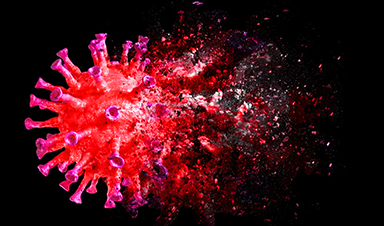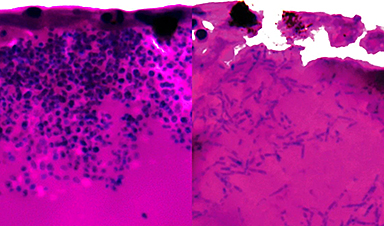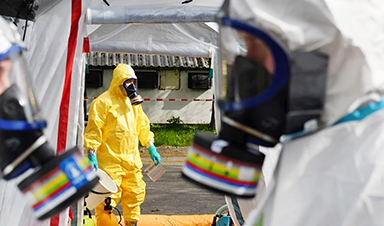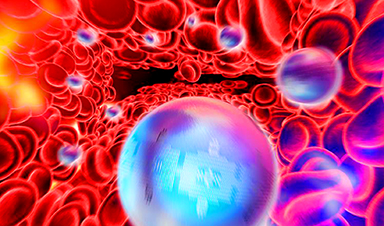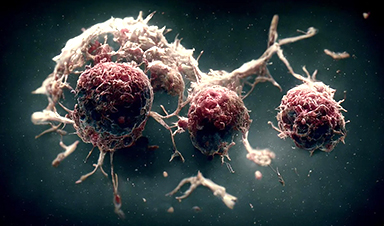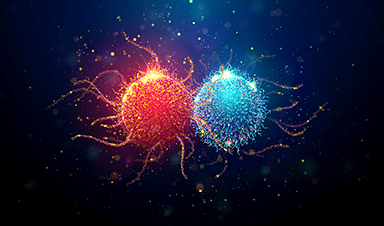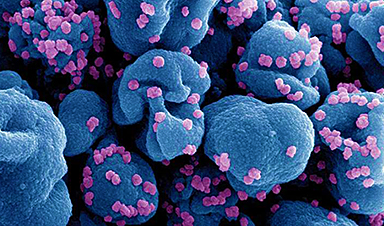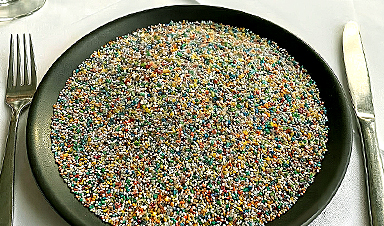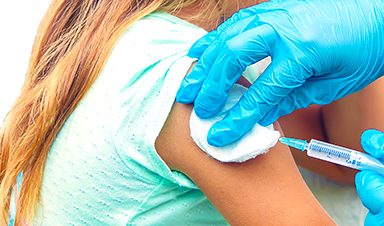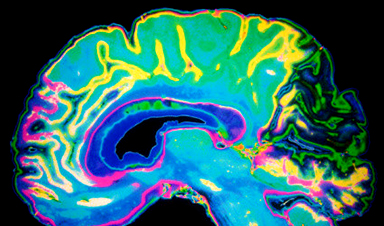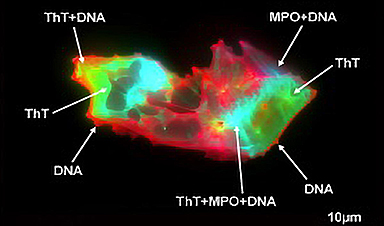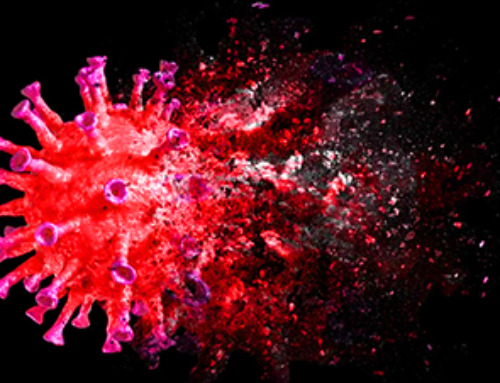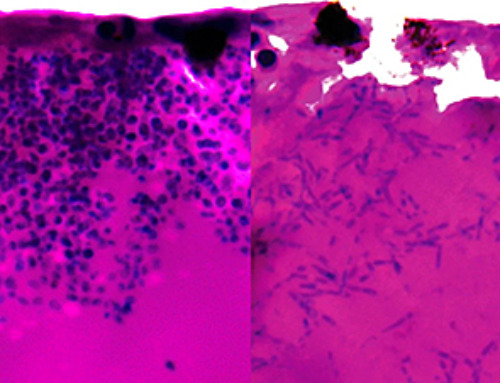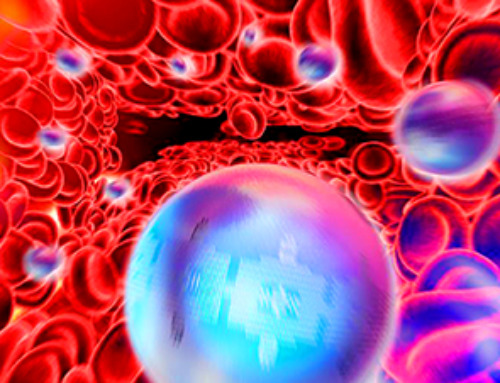How does the immune system fight pathogens?
The immune system has two distinct components: mucosal and circulatory.
The mucosal immune system provides protection at the mucosal surfaces of the body. These include the mouth, eyes, middle ear, the mammary and other glands, and the gastrointestinal, respiratory, and urogenital tracts. Antibodies and a variety of other anti-microbial proteins in the sticky secretions that cover these surfaces, as well as immune cells located in the lining of these surfaces, directly attack invading pathogens.
What are the key players in mucosal immunity?
The immune components people may be most familiar with are proteins known as antibodies, or immunoglobulins. The immune system generates antibodies in response to invading agents that the body identifies as "non-self," such as viruses and bacteria.
Antibodies bind to specific antigens: the part or product of a pathogen that induces an immune response. Binding to antigens allows antibodies to either inactivate them, as they do with toxins and viruses, or kill bacteria with the help of additional immune proteins or cells.
The mucosal immune system generates a specialized form of antibody called secretory IgA, or SIgA. Because SIgA is located in mucosal secretions, such as saliva, tears, nasal and intestinal secretions, and breast milk, it is resistant to digestive enzymes that readily destroy other forms of antibodies. It is also superior to most other immunoglobulins at neutralizing viruses and toxins, and at preventing bacteria from attaching to and invading the cells lining the surfaces of organs.
There are also many other key players in the mucosal immune system, including different types of anti-microbial proteins that kill pathogens, as well as immune cells that generate antibody responses.
How does the COVID-19 virus enter the body?
Almost all infectious diseases in people and other animals are acquired through mucosal surfaces, such as by eating or drinking, breathing or sexual contact. Major exceptions include infections from wounds, or pathogens delivered by insect or tick bites.
The virus that causes COVID-19, SARS-CoV-2, enters the body via droplets or aerosols that get into your nose, mouth, or eyes. It can cause severe disease if it descends deep into the lungs and causes an overactive, inflammatory immune response.
This means that the virus's first contact with the immune system is probably through the surfaces of the nose, mouth, and throat. This is supported by the presence of SIgA antibodies against SARS-CoV-2 in the secretions of infected people, including their saliva, nasal fluid, and tears. These locations, especially the tonsils, have specialized areas that specifically trigger mucosal immune responses.
Some research suggests that if these SIgA antibody responses form as a result of vaccination or prior infection, or occur quickly enough in response to a new infection, they could prevent serious disease by confining the virus to the upper respiratory tract until it is eliminated.
How do nasal vaccines work?
Vaccines can be given through mucosal routes via the mouth or nose. This induces an immune response through areas that stimulate the mucosal immune system, leading mucosal secretions to produce SIgA antibodies.
There are several existing mucosal vaccines, most of them taken by mouth. Currently, only one, the flu vaccine, is delivered nasally.
In the case of nasal vaccines, the viral antigens intended to stimulate the immune system would be taken up by immune cells within the lining of the nose or tonsils. While the exact mechanisms by which nasal vaccines work in people have not been thoroughly studied, researchers believe they work analogously to oral mucosal vaccines. Antigens in the vaccine induce B cells in mucosal sites to mature into plasma cells that secrete a form of IgA. That IgA is then transported into mucosal secretions throughout the body, where it becomes SIgA.
If the SIgA antibodies in the nose, mouth or throat target SARS-CoV-2, they could neutralize the virus before it can drop down into the lungs and establish an infection.
What advantage do mucosal vaccines have against COVID-19?
I believe that arguably the best way to protect an individual against COVID-19 is to block the virus at its point of entry, or at least to confine it to the upper respiratory tract, where it might inflict relatively little damage.
Breaking chains of viral transmission is crucial to controlling epidemics. Researchers know that COVID-19 spreads during normal breathing and speech, and is exacerbated by sneezing, coughing, shouting, singing and other forms of exertion. Because these emissions mostly originate from saliva and nasal secretions, where the predominant form of antibody present is SIgA, it stands to reason that secretions with a sufficiently high level of SIgA antibodies against the virus could neutralize and thereby diminish its transmissibility.
Existing vaccines, however, do not induce SIgA antibody responses. Injected vaccines primarily induce circulating IgG antibodies, which are effective in preventing serious disease in the lungs. Nasal vaccines specifically induce SIgA antibodies in nasal and salivary secretions, where the virus is initially acquired, and can more effectively prevent transmission.
Nasal vaccines may be a useful supplement to injected vaccines in hot spots of infection. Since they don't require needles, they might also help overcome vaccine hesitancy due to fear of injections.
How close are researchers to creating a nasal COVID-19 vaccine?
There have been over 100 oral or nasal COVID-19 vaccines in development around the world.
Most of these have been or are currently being tested in animal models. Many have reported successfully inducing protective antibodies in the blood and secretions, and have prevented infection in these animals. However, few have been successfully tested in people. Many have been abandoned without fully reporting study details.
According to the World Health Organization, 14 nasal COVID-19 vaccines are in clinical trials as of late 2022. Reports from China and India indicate that nasal or inhaled vaccines have been approved in these countries. But little information is publicly available about the results of the studies supporting approval of these vaccines.
News
AI Helped Scientists Stop a Virus With One Tiny Change
Using AI, researchers identified one tiny molecular interaction that viruses need to infect cells. Disrupting it stopped the virus before infection could begin. Washington State University scientists have uncovered a method to interfere with a key [...]
Deadly Hospital Fungus May Finally Have a Weakness
A deadly, drug-resistant hospital fungus may finally have a weakness—and scientists think they’ve found it. Researchers have identified a genetic process that could open the door to new treatments for a dangerous fungal infection [...]
Fever-Proof Bird Flu Variant Could Fuel the Next Pandemic
Bird flu viruses present a significant risk to humans because they can continue replicating at temperatures higher than a typical fever. Fever is one of the body’s main tools for slowing or stopping viral [...]
What could the future of nanoscience look like?
Society has a lot to thank for nanoscience. From improved health monitoring to reducing the size of electronics, scientists’ ability to delve deeper and better understand chemistry at the nanoscale has opened up numerous [...]
Scientists Melt Cancer’s Hidden “Power Hubs” and Stop Tumor Growth
Researchers discovered that in a rare kidney cancer, RNA builds droplet-like hubs that act as growth control centers inside tumor cells. By engineering a molecular switch to dissolve these hubs, they were able to halt cancer [...]
Platelet-inspired nanoparticles could improve treatment of inflammatory diseases
Scientists have developed platelet-inspired nanoparticles that deliver anti-inflammatory drugs directly to brain-computer interface implants, doubling their effectiveness. Scientists have found a way to improve the performance of brain-computer interface (BCI) electrodes by delivering anti-inflammatory drugs directly [...]
After 150 years, a new chapter in cancer therapy is finally beginning
For decades, researchers have been looking for ways to destroy cancer cells in a targeted manner without further weakening the body. But for many patients whose immune system is severely impaired by chemotherapy or radiation, [...]
Older chemical libraries show promise for fighting resistant strains of COVID-19 virus
SARS‑CoV‑2, the virus that causes COVID-19, continues to mutate, with some newer strains becoming less responsive to current antiviral treatments like Paxlovid. Now, University of California San Diego scientists and an international team of [...]
Lower doses of immunotherapy for skin cancer give better results, study suggests
According to a new study, lower doses of approved immunotherapy for malignant melanoma can give better results against tumors, while reducing side effects. This is reported by researchers at Karolinska Institutet in the Journal of the National [...]
Researchers highlight five pathways through which microplastics can harm the brain
Microplastics could be fueling neurodegenerative diseases like Alzheimer's and Parkinson's, with a new study highlighting five ways microplastics can trigger inflammation and damage in the brain. More than 57 million people live with dementia, [...]
Tiny Metal Nanodots Obliterate Cancer Cells While Largely Sparing Healthy Tissue
Scientists have developed tiny metal-oxide particles that push cancer cells past their stress limits while sparing healthy tissue. An international team led by RMIT University has developed tiny particles called nanodots, crafted from a metallic compound, [...]
Gold Nanoclusters Could Supercharge Quantum Computers
Researchers found that gold “super atoms” can behave like the atoms in top-tier quantum systems—only far easier to scale. These tiny clusters can be customized at the molecular level, offering a powerful, tunable foundation [...]
A single shot of HPV vaccine may be enough to fight cervical cancer, study finds
WASHINGTON -- A single HPV vaccination appears just as effective as two doses at preventing the viral infection that causes cervical cancer, researchers reported Wednesday. HPV, or human papillomavirus, is very common and spread [...]
New technique overcomes technological barrier in 3D brain imaging
Scientists at the Swiss Light Source SLS have succeeded in mapping a piece of brain tissue in 3D at unprecedented resolution using X-rays, non-destructively. The breakthrough overcomes a long-standing technological barrier that had limited [...]
Scientists Uncover Hidden Blood Pattern in Long COVID
Researchers found persistent microclot and NET structures in Long COVID blood that may explain long-lasting symptoms. Researchers examining Long COVID have identified a structural connection between circulating microclots and neutrophil extracellular traps (NETs). The [...]
This Cellular Trick Helps Cancer Spread, but Could Also Stop It
Groups of normal cbiells can sense far into their surroundings, helping explain cancer cell migration. Understanding this ability could lead to new ways to limit tumor spread. The tale of the princess and the [...]

